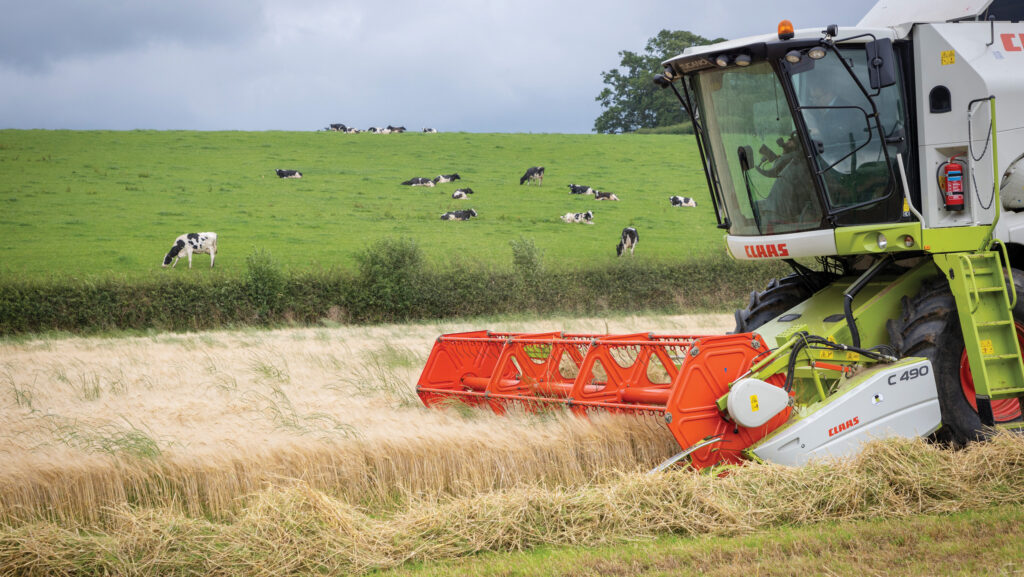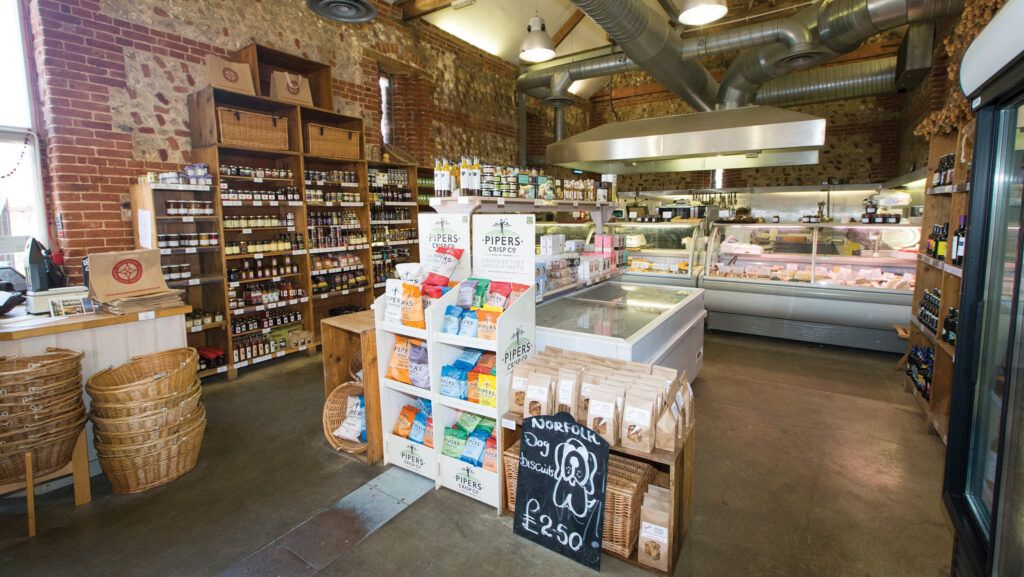Consider implications of farming company structure fully
 © GNP
© GNP A company structure is right for some businesses, but too often the decision is driven by the potential for paying less tax on profits when there is far more to consider, say advisers.
Corporation tax (CT) rates start at 19% and rise to a maximum of 25% on profits of more than £250,000.
This is in contrast to income tax rates in England and Wales of 20% to 45% for sole traders and those in partnerships, who also get a tax free personal allowance of £12,750 in the current year.
National Insurance applies for those under pension age, too. In Scotland, there is a £12,750 personal allowance, but the rates start at 19% and rise to 48% for earnings higher than £125,140.
Accountant Mike Butler, of PKF Francis Clark, says the company structure works well for those who want to grow their businesses rather than taking out profits, but the capital taxes aspect, and particularly inheritance tax (IHT), need careful thought.
See also: HMRC 2024 basis reforms – what farmers need to know
Partnerships can be very efficient, particularly for IHT, as assets held in a partnership can qualify for agricultural property relief (APR) and business property relief (BPR), both importantly at 100%.
“Where land and property are held as assets on the partnership balance sheet, this can often give the landowning partners APR and BPR, which may be relevant if there are let cottages and other enterprises that aren’t pure farming, for example a farm shop, tourism or leisure enterprise,” says Mike.
“Partnerships that own farmland which may have hope value and where the partnership farms that land would probably need to rely on not just APR, which is capped at the agricultural value, but also BPR.
“In the case of a partnership holding that asset, that BPR is at 100%, which is so important.
“If you were to transfer all your trading and business activities to a company, but retain personal ownership of the land and property, then you may well still qualify for APR on your agricultural assets, but you may immediately destroy any opportunity for BPR,” warns Mike.

© GNP
For example, if an individual together with their spouse controls a company that occupies the land which they own, but is farmed by the company, they can still get BPR on the owned land. At best though, this is only at 50%.
“So, imagine two brothers in an equal partnership who decide to form a company instead,” says Mike.
“They farm as a company but retain ownership of their land outside of the company. It’s likely neither would control the company because it’s joint ownership, so they would immediately lose any opportunity for BPR.
“That could be catastrophic where APR is not sufficient, such as land with hope value or property used by the company other than for pure farming.”
Capital allowances
Companies have more generous capital allowances than sole traders and partnerships, since the introduction of full expensing in the 2023 Budget.
This means the full cost of qualifying plant and equipment can be claimed in the year the expense is incurred, with no upper limit. This is in place until the end of March 2026, but applies to new equipment only.
In contrast, sole traders and partnerships have the annual investment allowance, currently £1m a year, which also allows the full cost to be claimed as a capital allowance in the year of purchase.
The £1m limit is likely to be sufficient for most business purchases, say advisers, and applies also to second-hand equipment.
Essentials when moving to a company
- Take advice early – planning is likely to take time
- If in a partnership, replace partnership agreement with a well-drafted shareholders’ agreement
- Update wills to avoid unintended inheritances (ie partnership shares no longer exist)
- Put in place suitable tenancy to protect both landowner and shareholders, usually a farm business tenancy
- Make sure the best income extraction strategy is selected, especially if personal tax rates change after a Budget
Beware catch-up effect
Tax saved up front as a result of 100% capital allowances could be viewed as an interest-free loan from HMRC. This catches up with the business when it slows down its expenditure on equipment.
“It’s not uncommon now for that up-front tax saving to be in the hundreds of thousands of pounds for farming businesses,” Mike says.
“Capital allowances defer tax and we are now in a trend where there is an extra cost to that deferral as a result of tax rate rises. A lot of businesses might think they don’t have much debt, but often their biggest debt is deferred tax.
“It’s not just when a business ceases when this tax saving will become repayable. It starts to reverse in years when people don’t buy much equipment. People may find their tax bill looks disproportionately high because they are not getting the allowances despite lower profits.
“In a company, you have to normally include deferred tax in your accounts – that is the tax you would pay on any balance sheet date if you realised all your plant and equipment at market value.
“It’s really there to protect creditors so that when they look at a company balance sheet showing, say, £1m of plant and equipment, there is also provision for the tax that would be payable if that equipment was realised, remembering that the same plant is probably written down to nil for tax purposes.”
Partnerships and sole traders have the same issue, but the amount is not shown on the accounts. However, their accountant can calculate this risk.
One advantage of moving from sole trader or partnership to company is that the lower corporation tax rate means paying a maximum of 25% on that reversal rather than up to 40% or 45% income tax.
An election can be made to transfer equipment at market value in return for a directors’ loan account, and this can take the taxpayer out of income tax for years.
Gifting company shares on death
Shares in a farming company inherited on death are tax free, provided APR and BPR are available, with the capital gain washed away at this point.
While it might be advantageous to transfer recently bought land into the company, for reasons associated with the debt on that land, or to create a larger director’s loan, it isn’t the norm for land and other property assets to be transferred wholesale into a company.
Where this is done, a potential capital gain is being realised. Incorporation relief can accommodate this by allowing the gain to be rolled over tax free into the shares issued.
There is also a potential stamp duty land tax charge to the company.
Legal aspects of company structure
In contrast to the position of a sole trader or a partnership, where the partners are each personally liable for the potentially unlimited debts and obligations of the business, a company structure offers limited liability.
A limited company is a separate legal entity, responsible for its own debts and liabilities, rather than these being carried by its shareholders, says Tom Potts, a partner in law firm Clarke Willmott.
However, where there are debts, and in particular borrowings, personal guarantees are often requested from the owners of a limited company.
A limited company structure offers the ability to separate the day-to-day management of the business by the directors from its ownership by the shareholders.
This can be helpful in farming situations where, for example, a child or sibling might have a career outside the farm and can be given a financial interest in the business through shares, but is not involved in the management of the business, says Tom.
“Also, if you ever want to sell the business, there are more options with a limited company as a buyer can simply buy the shares, as opposed to each individual asset within the business.
“Incorporation won’t be the right option for everyone. Disadvantages to be aware of include privacy, with details of the limited company, its accounts, directors’ names and shareholder details being available online at Companies House.”
Companies must file documents, including annual accounts, confirmation statements and notifications of any changes in directors and persons with significant control, creating an additional administrative burden.
Tom says: “Registering a new company is fairly quick and straightforward, by submitting a form to Companies House which will typically issue your certificate of incorporation.
“The legal costs of transferring to a company structure will depend on the complexity of the business and how many outside parties are involved, such as banks. It is important to agree a clear scope and fee estimate with advisers from the outset.”
Key issues to address include:
- Do lenders have security over any assets to be transferred? If yes, this will have to be released and a new security put in place in the company name.
- Any employees will automatically transfer to the company under the Transfer of Undertakings (Protection of Employment) Regulations 2006 (known as “Tupe”). This is a formal process.
- Any key customer or supplier contracts being transferred to the company may require customers’ or suppliers’ prior consent.
- Paperwork for the transfer is likely to include a business purchase agreement and Land Registry transfer forms for any land being moved into the company.
- Shareholder resolutions will be needed to ensure the transaction is valid under company law.
Tax rates compared: income and corporation tax
Corporation tax
- Small profit rate Charged on profits of £50,000 or less – 19%
- Main rate Charged on profits of £250,000 or more
Marginal relief on profits between £50,000 and £250,000. Marginal rate is 26.5% which is an opportunity to plan tax efficient spending, says Mike Butler.
Personal income tax
- Current tax year 6 April 2024 to 5 April 2025
- Standard personal allowance £12,570 – tax rate 0%
Income tax
- Standard personal allowance £12,570 – tax rate 0%
- Basic rate £12,571 to £50,270 – tax rate 20%
- Higher rate £50,271 to £125,140 – tax rate 40%
- Additional rate Over £125,140 – tax rate 45%
In Scotland there is also a £12,750 personal allowance, but the rates start at 19% and rise to 48% for earnings higher than £125,140.
More information can be found at gov.uk/scottish-income-tax
